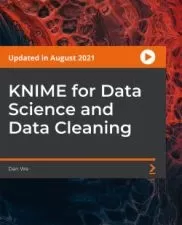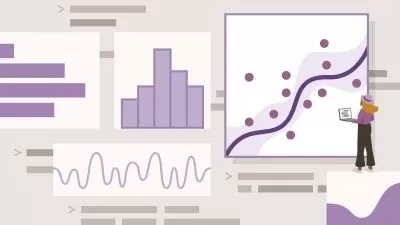Statistics with R - Intermediate Level
Bogdan Anastasiei
2:24:04
Description
Statistical analyses using the R program
What You'll Learn?
- run parametric and non-parametric correlation (Pearson, Spearman, Kendall)
- perform partial correlation
- run the chi-square test for association
- run the independent sample t test
- run the paired sample t test
- execute the one-way analysis of variance
- perform the two-way and three-way analysis of variance
- run the one-way multivariate analysis of variance
- run non-parametric tests for mean difference (Mann-Whitney, Kruskal-Wallis, Wilcoxon)
- execute the multiple linear regression
- compute the Cronbach's alpha
- compute other reliability indicators (Cohen's kappa, Kendall's W)
Who is this for?
What You Need to Know?
More details
DescriptionIf you want to learn how to perform the most useful statistical analyses in the R program, you have come to the right place.
Now you don’t have to scour the web endlessly in order to find how to do a Pearson or Spearman correlation, an independent t test or a factorial ANOVA, how to perform a sequential regression analysis or how to compute the Cronbach’s alpha. Everything is here, in this course, explained visually, step by step.
So, what will you learn in this course?
First of all, you will learn how to perform association tests in R, both parametric and non-parametric: the Pearson correlation, the Spearman and Kendall correlation, the partial correlation and the chi-square test for independence.
The test of mean differences represent a vast part of this course, because of their great importance. We will approach the t tests, the analysis of variance (both univariate and multivariate) and a few non-parametric tests. For each technique we will present the preliminary assumption, run the procedure and carefully interpret all the results.
Next you will learn how to perform a multiple linear regression analysis. We have assign several big lectures to this topic, because we will also learn how to check the regression assumptions and how to run a sequential (or hierarchical) regression in R.
Finally, we will enter the territory of statistical reliability – you will learn how to compute three important reliability indicators in R.
So after graduating this course, you will get some priceless statistical analysis knowledge and skills using the R program. Don’t wait, enroll today and get ready for an exciting journey!Who this course is for:
- students
- PhD candidates
- academic researchers
- business researchers
- University teachers
- anyone looking for a job in the statistical analysis field
- anyone who is passionate about quantitative analysis
If you want to learn how to perform the most useful statistical analyses in the R program, you have come to the right place.
Now you don’t have to scour the web endlessly in order to find how to do a Pearson or Spearman correlation, an independent t test or a factorial ANOVA, how to perform a sequential regression analysis or how to compute the Cronbach’s alpha. Everything is here, in this course, explained visually, step by step.
So, what will you learn in this course?
First of all, you will learn how to perform association tests in R, both parametric and non-parametric: the Pearson correlation, the Spearman and Kendall correlation, the partial correlation and the chi-square test for independence.
The test of mean differences represent a vast part of this course, because of their great importance. We will approach the t tests, the analysis of variance (both univariate and multivariate) and a few non-parametric tests. For each technique we will present the preliminary assumption, run the procedure and carefully interpret all the results.
Next you will learn how to perform a multiple linear regression analysis. We have assign several big lectures to this topic, because we will also learn how to check the regression assumptions and how to run a sequential (or hierarchical) regression in R.
Finally, we will enter the territory of statistical reliability – you will learn how to compute three important reliability indicators in R.
So after graduating this course, you will get some priceless statistical analysis knowledge and skills using the R program. Don’t wait, enroll today and get ready for an exciting journey!Who this course is for:
- students
- PhD candidates
- academic researchers
- business researchers
- University teachers
- anyone looking for a job in the statistical analysis field
- anyone who is passionate about quantitative analysis
User Reviews
Rating
Bogdan Anastasiei
Instructor's Courses
Udemy
View courses Udemy- language english
- Training sessions 24
- duration 2:24:04
- English subtitles has
- Release Date 2023/10/14

















